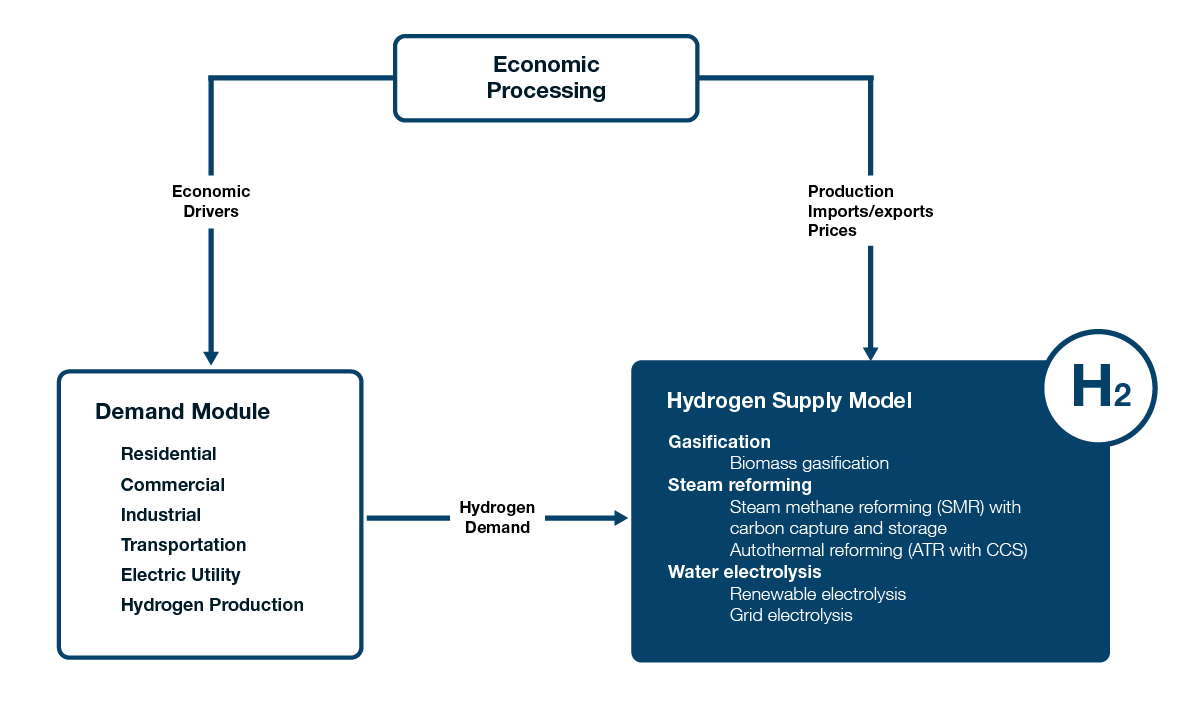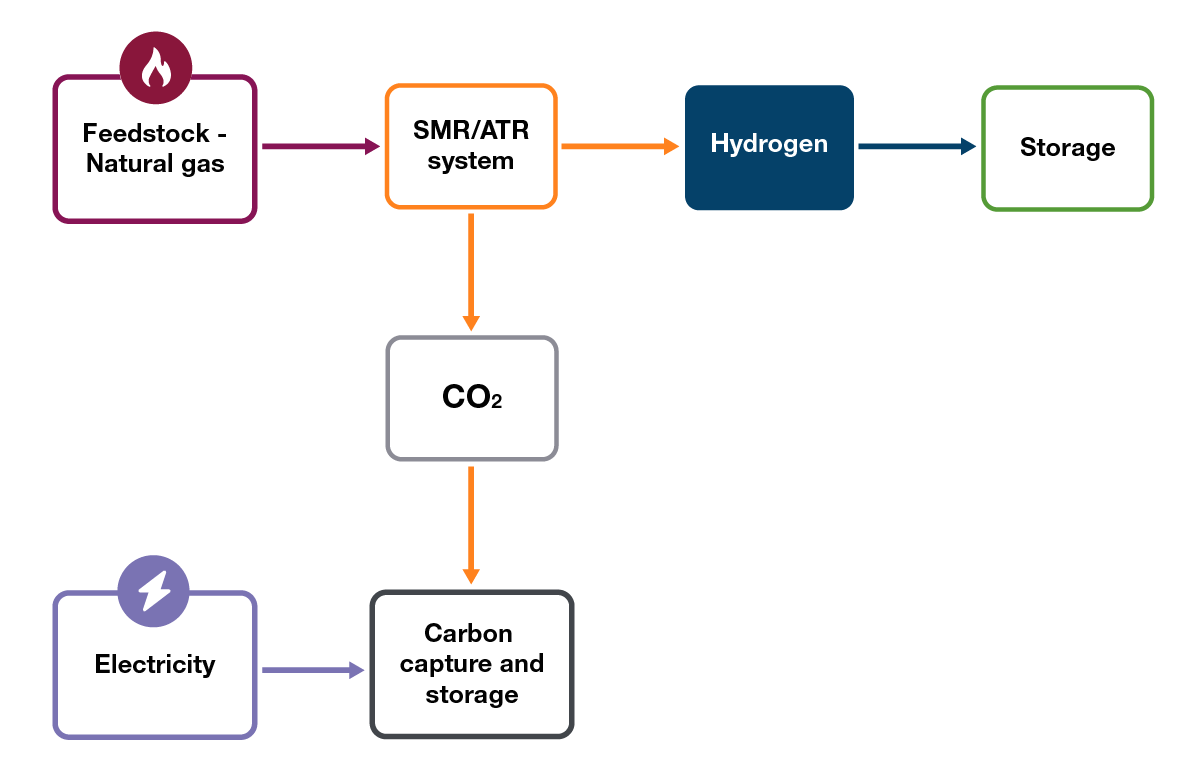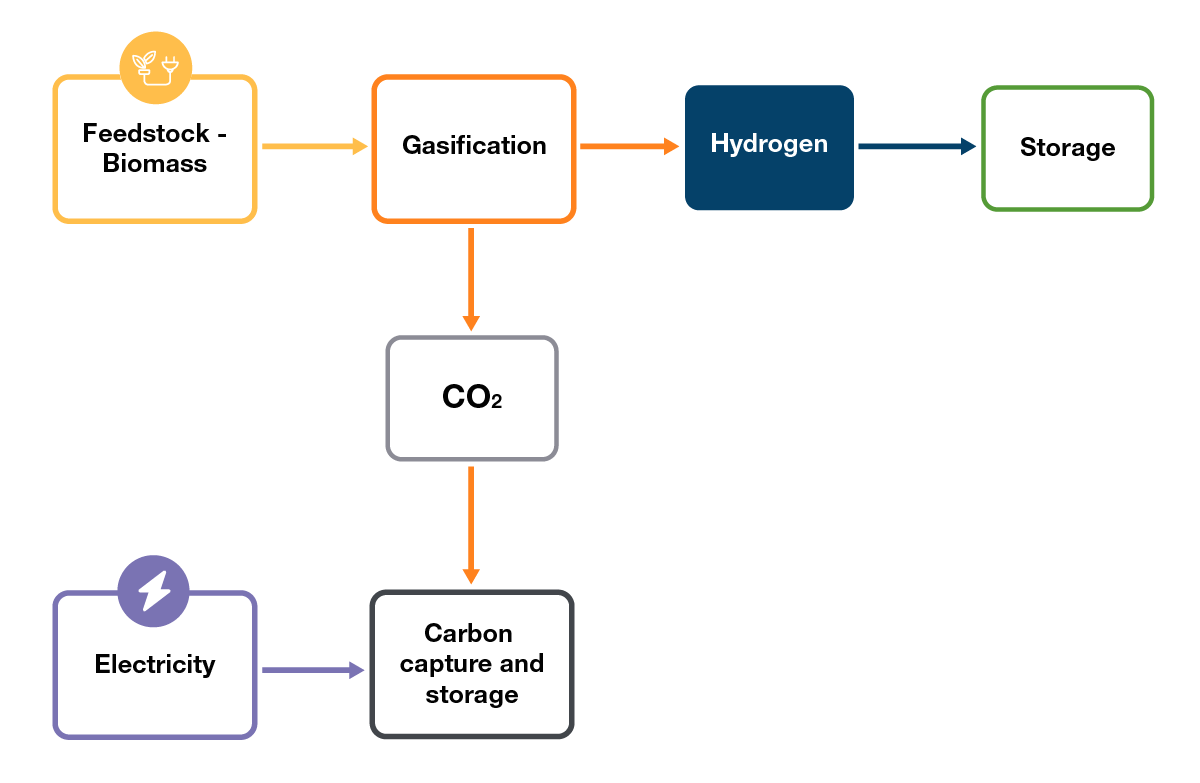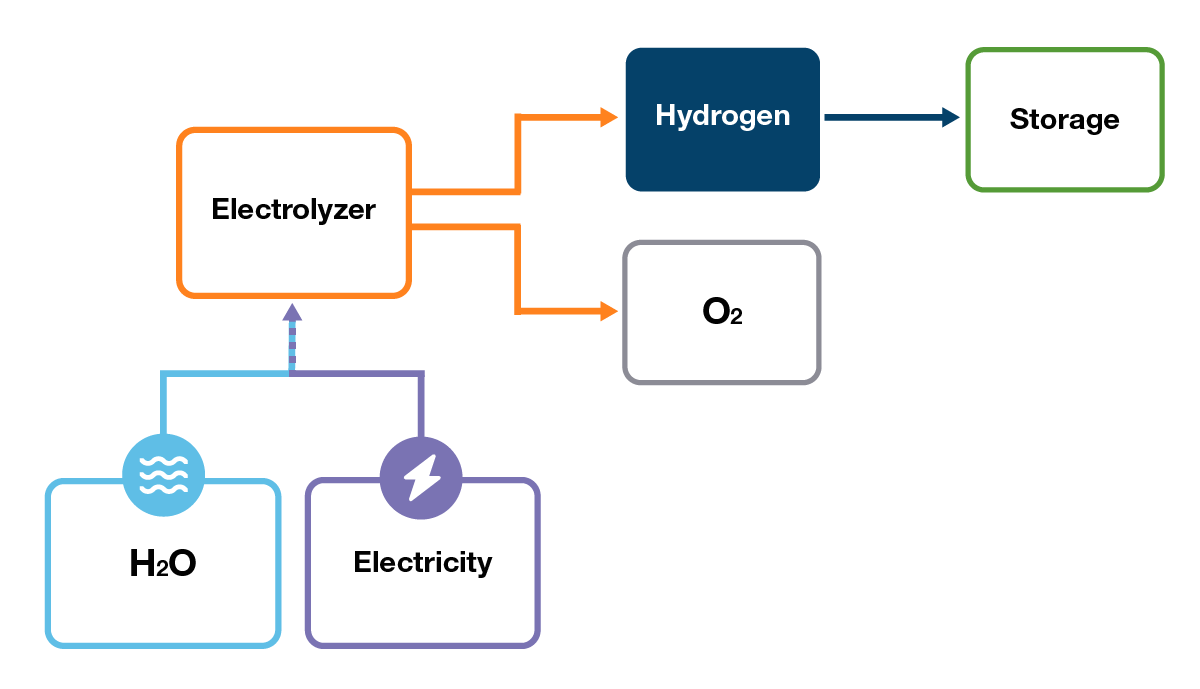
Hydrogen Supply Model
Model Description
The hydrogen supply projections in EF2023 are developed using the hydrogen supply module in ENERGY 2020, a hybrid energy-economy model, which simulates the production of hydrogen for both domestic demand and potential exports. The module includes electrolysis, gasification, and reforming as the main production technologies.
Figure H.1: Hydrogen supply model overview
Source and Description
Source: CER
Description: This infographic illustrates the hydrogen supply model. Each technology is assigned production costs: capital, fuel, feedstock, emissions, operation and maintenance, transportation, distribution, and storage. The model determines which of the technologies will be used to satisfy hydrogen demands, from either domestic hydrogen or exports. The technology choice is based primarily on production costs, which differ by province and is affected by factors such as fuel prices (e.g., natural gas and electricity) and carbon sequestration costs for technologies that include carbon capture, utilization, and sequestration (CCUS). The model further calculates energy demand and emissions from hydrogen production, including energy consumption from combustion and feedstock in addition to any emissions that are sequestered (from carbon capture and storage technologies).
Hydrogen supply model overview
The hydrogen supply projections in EF2023 are largely driven by hydrogen demand. Hydrogen is used in domestic end-use sectors like residential, commercial, industrial, transportation, and electricity generation. Hydrogen demands are determined by the Energy Demand model for the end-use sectors, and the Electricity Supply model for electricity generation. In both models, hydrogen adoption will depend on numerous factors such as the price of hydrogen and the availability and costs of hydrogen-using technology (e.g., fuel cell electric vehicles). Hydrogen competes with other energy sources like electricity, bioenergy, or fossil fuels to satisfy energy needs. International or domestic hydrogen trade is not modeled in the Energy Futures Modeling System at this time, however, assumptions about these factors may be included in the scenarios. When scenarios include assumptions about hydrogen produced for export, hydrogen demand–and the amount of hydrogen needed to supply this demand–increases.
The hydrogen supply model determines specific hydrogen production targets for each province and territory from other inputs of the Energy Futures Modeling System. The production technology choice is largely based on relative costs of the technology. Costs are based on the specific characteristics of each production technology, including capital costs, fuel use, capacity, access to carbon sequestration (if applicable), and emissions profiles. Additionally, the hydrogen supply model calculates the energy demand and emissions associated with hydrogen production. This includes the energy consumed in combustion and feedstock processes, as well as the emissions captured and sequestered through carbon capture and storage technologies.
Figure H.2: Relationship between hydrogen supply and demand

Source and Description
Source: CER
Description: This flow chart shows the relationship between hydrogen supply and demand. Economic factors influence both demand and supply. Hydrogen demand is calculated by the Energy Demand Model. Canadian demand, and any included exports, are satisfied by the supply model which includes a variety of technologies.
Hydrogen production technologies
Each hydrogen production technology in the hydrogen supply model is assigned a set of characteristics, consisting of production costs, efficiency, physical lifetimes, energy usage, utilization, yield from feedstockDefinition*, sequestered pollution fractionDefinition*, emission coefficientsDefinition*, and consumer choice parametersDefinition* indicating the impact of price and non-price factors for each production technology.
Hydrogen can be produced from organic compounds such as biomass, natural gas, or coal through various processes. It can also be produced from water through electrolysis. The main forms of production in the model are electrolysis, reforming, and gasification.
Steam-methane reforming (SMR): a process in which natural gas (the main source for methane) reacts with steam at a high pressure to produce hydrogen and carbon dioxide (CO2).
Auto thermal reforming (ATR): like SMR, ATR process uses natural gas as the main source of methane, the main difference is the source of heat. In an ATR system, air (oxygen) causes oxidization to produce endogenousDefinition* heat that is required for steam reforming (Figure H.3).
Figure H.3: Methane reforming process overview

Source and Description
Source: CER
Description: This flow chart shows the methane reforming process used for natural gas with CCS hydrogen production. Feedstock natural gas is used by SMR or ATR systems to produce hydrogen, which can be used or stored, as well as CO2, which can be sequestered with carbon capture technology.
Biomass
Biomass gasification uses steam, oxygen, and heat, to convert biomass to syngasDefinition* which is then processed to produce hydrogen (Figure H.4).
Figure H.4: Biomass gasification process overview

Source and Description
Source: CER
Description: This flow chart shows the biomass gasification process used for biomass hydrogen production. Feedstock biomass is used by gasifier systems to produce hydrogen, which can be used or stored, as well as CO2, which can be sequestered with carbon capture technology.
Electrolysis: uses electrical power to split water into hydrogen and oxygen. This process takes place in an electrolyzer. Depending on the source of electricity, hydrogen produced through this process can have low to zero carbon emissions (Figure H.5).
Figure H.5: Electrolysis process overview

Source and Description
Source: CER
Description: This flow chart shows the electrolysis process. Electrolysis uses electrical power to split water into hydrogen and oxygen. This process takes place in an electrolyzer. The hydrogen can then be used or stored.
Production processes
Hydrogen production processes are organized in categories based on the type of energy used to power each technology (Table H.1).
Table H.1: Overview of production technologies
| Production technology | Description |
|---|---|
| Grid electrolysis | Electrolysis powered by electricity purchased from the grid. |
| Renewable electrolysis | Electrolysis powered by dedicated renewables (this is like onsite industrial electricity generation). |
| SMR NG with CCS | Steam-methane reforming process using natural gas with carbon capture and storage. |
| ATR NG with CCS | Auto thermal reforming process using natural gas with carbon capture and storage. In an ATR system, air (oxygen) causes oxidization to produce endogenous heat that is required for steam reforming. |
| Biomass with CCS | Biomass gasification and reforming process using solid biomass with carbon capture and storage. |
The hydrogen model assigns a targeted amount of production within each model area based on demand. The market shares of the five technologies are then estimated based on consumer choice equations balancing price and non-price factors. Each of the five production technologies are assigned default parameters. Table H.2 provides an example of default characteristics, although these could vary by scenario and time.
Table H.2: Default production technology characteristics
| Default assumptions | Scale | Electrolysis | Electrolysis (Renewables) | ATR+CCS | SMR+CCS | Biomass + CCS |
|---|---|---|---|---|---|---|
| Utilization rate | 0.86 | Wind = 0.86*0.30 Solar = 0.86*0.10 |
0.90 | 0.90 | 0.90 | |
| Plant output | (kg/day) | 1,500 | 379,000 | 379,000 | 379,000 | 139,282 |
| Efficiency | KWh. | <50 KWh. | <50 KWh. | |||
| CO2 capture rate | 0.95 | 0.90 | 0.90 | |||
| Useful life | Years | 40 | 40 | 40 | 40 | 40 |
Emissions from hydrogen production
Depending on the production technology, producing hydrogen may emit emissions from combustion and feedstocks. Additionally, a certain amount of pollution may be sequestered.
- Combustion emissions by fuel type are calculated based on the amount of fuel used to produce hydrogen (electricity, wind, solar, or natural gas) times an emission coefficient. Combustion emissions are only present for technologies that use natural gas. The combustion emissions are reduced by the amount able to be sequestered.
- Feedstock emissions by fuel are calculated based on the amount of feedstock (natural gas) used by production technology times a feedstock emissions coefficient. The feedstock emissions are reduced by the amount of feedstock emissions that are sequestered.
- Sequestered emissions from hydrogen production are calculated as a portion of the amount of fuel used for combustion, and feedstocks to produce hydrogen. CCUS can reduce the emissions emitted during hydrogen production. A fraction of feedstock emissions gets sequestered as indicated by the exogenous sequestering fraction.
- Date modified:

